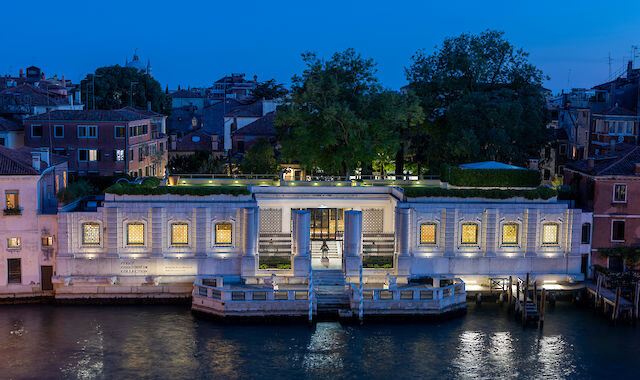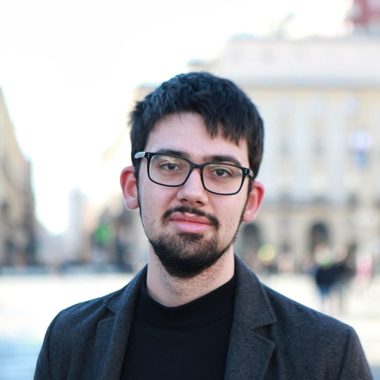There are few things more Italian than the canals of Venice. They’re so rooted in the common consciousness that despite their relatively small area, they’re so representative of its appeal all around the world.
The same appeal that back in 1948 moved Peggy Guggenheim, maybe the greatest art collector in the twentieth century, to buy a noble palace, Palazzo Venier dei Leoni, to house her art collection, which later became the core of the P. Guggenheim Collection, opened in the same venue in 1951. The collection houses some of the finest artworks of the last century and it features Magritte, Dalì, Kandinsky, Picasso, Klee, Pollock and many others who knew and interacted with the founder of the institution, Peggy, whose story is so entrenched with the collection she built.
Peggy was the daughter of one of the richest New York families, the Guggenheims, which made their fortune in the mining industry, and her social status as an heiress (Peggy’s father died during the sinking of the Titanic) allowed her a career in the art-world.
She was not only a collector, but a curator, because with her choices she built up a collection that mirrored the artistic trends of her time, trusting many emerging artists who, thanks to her, later came up to be recognized as masters, such as Jackson Pollock.
“Peggy happened to be surrounded by great advisors for her choices (artists like Mondrian or Brâncuși), which had a huge impact on art, even if she did not reach a total awareness of that till the 1951’s opening of the Collection in Venice,” declares Karole Vail, granddaughter of Peggy Guggenheim and directress of the eponymous colledction, “She discovered her interest in the art field very late, at the tender age of 40, when, trying to get involved in the cultural scene, she thought a gallery would have been much cheaper than a publishing house. That is why she firstly decided to open a space for exhibitions in London back in 1938. She wanted to do something serious in her life”
Peggy’s first attempt in London did not last after WWII’s outbreak. She moved to Paris for a very brief time before the Nazi occupation in 1940, but that time was enough for her to buy the paintings that would become the core of her collection. Paris then was the world art capital, meeting point of the best living masters, but the war marked a turning point as many of them escaped, as Peggy did, towards the USA and New York.
There “she was certainly instrumental in bridging the art-world from Europe to the USA” where, Vail says, “from 1942 to 47, she spent 5 years 30 West 57th Street, in New York, where she opened a gallery called “The Art of This Century.” New York was becoming the new artistic capital in the world and Peggy allowed the US and NYC to discover the European artistic scene, full of artistic movements like Surrealism, Futurism, Cubism and so on, which were born as a European phenomenon but eventually became of global relevance only after the arrival in the US.
The knowledge of European art was influenced a new generation of American artists, from Pollock to Mark Rothko, who were interested in non-objective art and got inspired by the old continent’s news.
Peggy in a way at the center of this exchange of innovation between the two continents, and this role reached its maximum in the opening of the collection in Venice four years after the experience in New York. Since then the institution has been for Venice “a landmark. The collection is part of the city, it is rooted in the local cultural net, it’s entrenched with the institutions. Moreover it’s a perfect frame for tourists and locals”
But behind such a great public history there’s also a private one, sometimes sad, due to her father’s death. “She wasn’t an easy woman, she was not always able to keep ties with her children and grandchildren. This was probably due to her education in a wealthy New-York family, where the butlers may have prevented her from having a close bond with her parents. Families are never simple, they’re somewhat extra-ordinary” says Vail, who affirms that “being Peggy’s granddaughter maybe gives me something more, and I’m grateful for that. In my job my only thought is to always do my best, I’m not used to looking at it as a familiar business. Obviously there’s kind of a huge responsibility I feel as a consequence of the familiar link”.
For Peggy the collection was not only an institution, but a house and a home for Karole Vail as a young girl: “It was my grandmother’s home but opened to the public.” Here she slept many times and she found scary “sleeping near the surrealist artworks, they were dreamy, strange, curious and they simply terrified me while hanging on my room’s wall.”
This familiar history has long characterized the world cultural scenario – Peggy’s uncle is the founder of the Solomon R. Guggenheim Museum in NY – which has somewhat created itself an artwork, which in my opinion is the true nature of a museum, mingling the single works exposed with the structure and the story of the place.
Peggy’s Collection reaches the top score in all these three categories and the debt that art history has to pay to this extraordinary woman, with all her limits, is enormous. She was a woman whose view was not narrow, not limited either geographically nor artistically, and every time we see a Pollock, a Kandinsky, a Magritte hanging on a wall in an exhibition we should think that maybe that piece of art is there thanks to a woman who years ago believed in the painters and helped make the world appreciate them as well.
Author
-

Dario Pio Muccilli is the Star-Revue’s Italian correspondent, based in Turin. Email him at muccillidariopio@gmail.com
View all posts
Dario Pio Muccilli is the Star-Revue’s Italian correspondent, based in Turin. Email him at muccillidariopio@gmail.com










